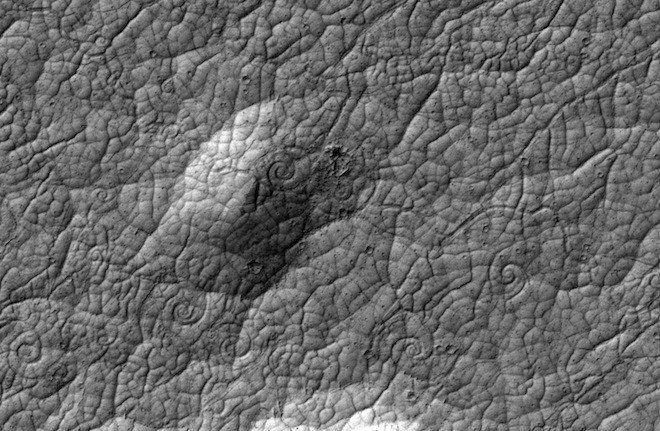Lava patterns resembling corkscrew snail shells have been seen for the first time on Mars. Credit: NASA/JPL/University of Arizona
TEMPE, Ariz., April 27 (UPI) -- A distinctive spiral form of lava flow similar to those found in a few locations on Earth has been detected on Mars for the first time, U.S. researchers say.
Arizona State University graduate student Andrew Ryan made the discovery of so-called lava coils in high-resolution photos of Martian lava flows taken by the Mars Reconnaissance Orbiter.
On Earth, lava coils can be found on the Big Island of Hawaii, mainly on the surface of ropey pahoehoe lava flows, and have also been seen in submarine lava flows near the Galapagos Rift on the Pacific Ocean floor.
"The coils form on flows where there's a shear stress -- where flows move past each other at different speeds or in different directions," Ryan said in an ASU release Friday.
"Pieces of rubbery and plastic lava crust can either be peeled away and physically coiled up -- or wrinkles in the lava's thin crust can be twisted around."
The size of Martian lava coils came as a surprise, Ryan said.
"On Mars the largest lava coil is 30 meters across -- that's 100 feet. That's bigger than any known lava coils on Earth."
The findings may settle a scientific debate about how a mysterious network of valleys on Mars was formed, with some scientists proposing that lava created them while others have thought ice was responsible for shaping them.
"These can only be explained by lava processes," Ryan said of the origin of the Athabasca Valles region near the equator of Mars.
"There are no known processes to twist ice around on that scale."















